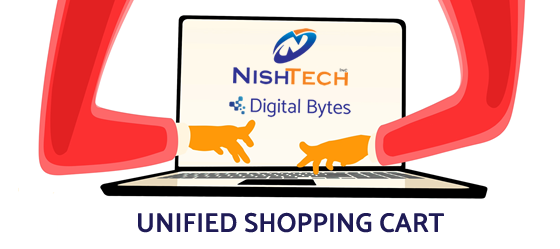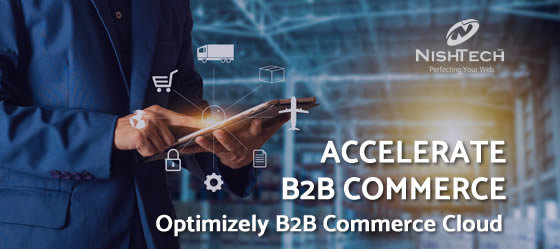Bringing the B2C Experience to B2B Ecommerce
written by Lindsey Schmidt - Digital Project Manager
|March 2022
With the evolution of ecommerce over the years, businesses have had to adapt to and overcome various challenges and change the way they’re doing business to meet the needs of their customers. Back when I first got started about 15 years ago in ecommerce implementations it seemed there were two main goals when it came to new B2B projects – efficiency and performance. The main goal of the project was to get the customer in and out as quickly and efficiently as possible.
While I fully expect efficiency and performance to remain a top priority for ANY project implementation, there is a shift that has been happening with B2B where the primary focus needs to be put on the customer instead of the product. Focusing on getting customers to place orders quickly and efficiently is great, but we also can’t forget about the customer experience.
How and why do companies make this shift? How do they start looking more at the customer experience? Let’s start with the WHY:
- Increase engagement & conversion
- Get ahead of competition & drive new customer engagement
- Increase ROI
I covered these concepts in more detail in another blog entry: "Why a Digital Experience Platform is Important for Manufacturers and Distributors".
So how do companies get started? There are several ways to make the shift and optimize your B2B website to be more focused on the customer experience, but one way to do this is by incorporating B2C capabilities into your B2B website.
 As a business ask yourselves the following question: How do you take what would be an in-person shopping experience and replicate that online with the same level of personalization? You can walk into any brick-and-mortar store and right away you’ve got just about everything you need at your fingertips – customer service where you can ask questions or make a return, everything is organized by department, related products are grouped together, you have different payment options at checkout, and probably some extra “nice-to-have” features thrown in somewhere.
As a business ask yourselves the following question: How do you take what would be an in-person shopping experience and replicate that online with the same level of personalization? You can walk into any brick-and-mortar store and right away you’ve got just about everything you need at your fingertips – customer service where you can ask questions or make a return, everything is organized by department, related products are grouped together, you have different payment options at checkout, and probably some extra “nice-to-have” features thrown in somewhere.
But let’s get specific: what major areas could businesses opt to spend more a little more time, and what kinds of B2C capabilities and features would benefit B2B customers?
Product Data and Content
In the ecommerce world, how do customers obtain the information necessary to make an informed decision? Content.
You must remember that online customers don’t have the ability to physically walk over to a product, look at it, pick it up, compare brands/sizing/specifications/etc. You need to replicate this experience online. Don’t neglect these areas:
- Consistent, detailed product content
- Product ratings and reviews
- Product comparisons
- High quality imagery and multiple product images
- Refining search capabilities (B2B and B2C may have different needs when it comes to configuring search, but don’t ignore this critical component)
- Utilizing product cross sells/upsells/accessories
- Value add content like videos, how-tos, demonstrations, anything that will show the product or service in action
- Blog posts (content like this sets you up as an expert in your industry and sets you apart from competitors by showcasing your knowledge)
Overall Website Usability
B2B implementations used to be focused on efficiency and performance, but now B2B customers are looking for features typically found in a B2C experience:
- Smart, user-friendly, intuitive design
- Mobile optimization and responsiveness - Often, business users are not sitting at a desk when browsing or ordering - they’re out in the field using a mobile device or tablet.
- More efficient and flexible checkout process - Provide multiple types of shipping and payment options, give customers the ability to pick up and pay by credit card, and even buy online pickup in store (“BOPIS”). This is a great example of how businesses today have had to adapt to the changing pandemic. With in-person shopping decreasing early on, several companies adapted successfully by offering features like curbside pickup and mobile app ordering.
Customer Relationship
Not necessarily a capability per se, nor something that is specific to B2C, but B2C tends to put more focus here. One way to look at this is to anticipate customer questions before they have to reach out and ask.
- Make information readily available on the storefront and reduce obstacles before they become a problem.
- Self-service: B2B tends to get complex, so try to reduce the complexity that comes with the B2B shopping experience and make the online version easier. For example, if you have a business process that requires execution by customers over the phone, find a way to allow them to do this themselves on the website in a seamless way, while still maintaining the relationship and level of support they need.
- Look at your social media. A positive, interactive social media presence can foster business growth, boost your brand, and build the relationship and trust with your customer base.
While this is just a high-level overview, and by no means a complete list, think about how putting more focus here can help you engage more deeply with your customers and provide the optimized experience that B2B users are now expecting.



